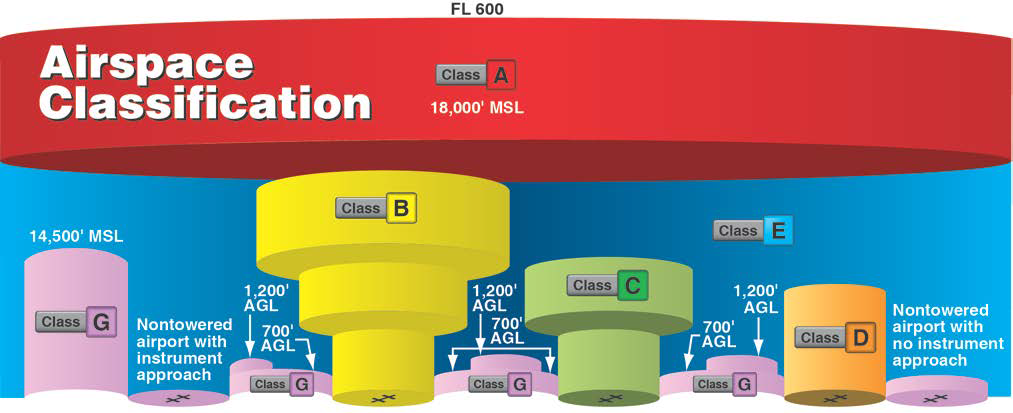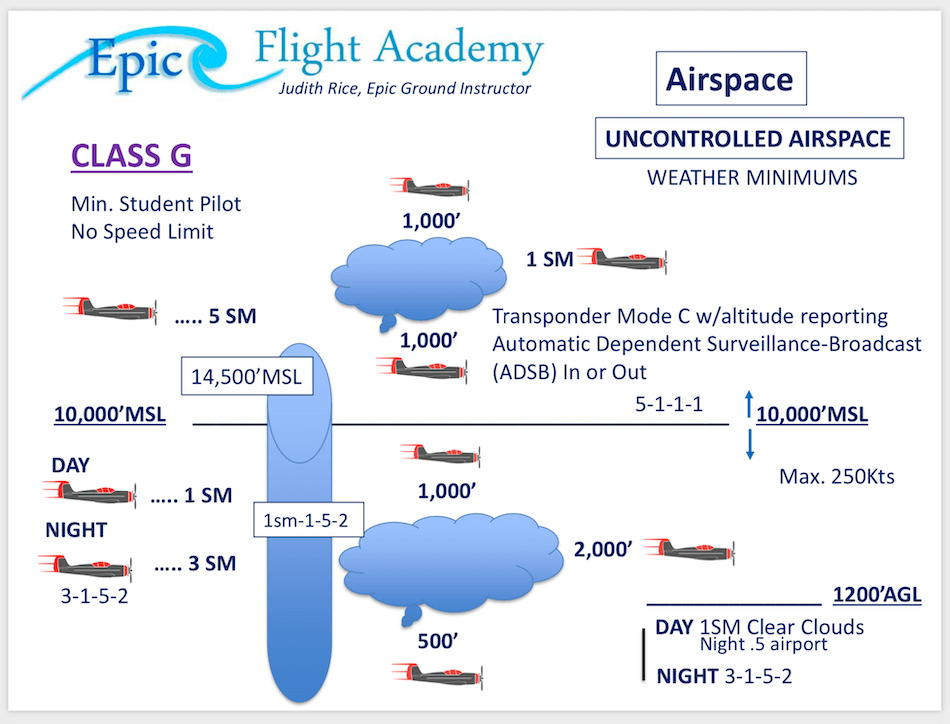class g airspace canada
8 km flight visibility 1500 m horizontally from cloud 1000 ft 300m vertically from cloud. Neither VFR Visual Flight Rules nor IFR Instrument Flight Rules aircraft need an ATC clearance to operate in Class G airspace.

Canadian Airspace Classes Coastal Drone
We can see from the example picture 09 that unless we are.

. It is what we call open airspace. Any airspace not specifically identified as controlled airspace on a chart is Class G airspace. Class G airspace exists in any space that is not Class A B C D E or F.
Class G airspace is all airspace that is not another classification. However pilots are required to meet IFR altitude and flight level requirements. At and above FL 100.
Google Maps Viewer for Canadian Airspace. Class E airspace is similar to CLASS G with the difference being flights under 3000ft need to have sight of the surface and clear of cloud in Class G that nugget of info will probably be in your exam Below is another way to interporate Airspace classes. Airspace is managed by Transport Canada and detailed information regarding exact dimensions and classification is available in the Designated Airspace Handbook which is published every fifty-six days by NAV CANADA.
Class G airspace would exist from the ground up to a specific altitude say 2200 feet above the ground where the airspace then changes to. Typically Class G airspace includes all of the airspace below 14500 ft. This is really not very hard to comprehend but if you look at the list of TC Enforcements 2 and.
Class G airspace is uncontrolled and is considered the basic operating environment for RPAS assuming the conditions regarding proximity to people airports and heliport are met. Special-use airspace for activities such as parachuting and aircraft. That is not otherwise designated Class B C or D airspace.
Class F Class G Fig 7-2 Canadian Airspace Structure. ATC provides separation for IFR aircraft only. Class G airspace is not specifically shown on aviation charts.
Below 122 m 400 ft 19 km from heliports 56 km from airports and outside controlled airspace. 14 CFR 91177 requires pilots to remain at least 1000ft above the highest obstacle within a horizontal distance of 4NM from the course indicated in the filed flight plan. How To Find It.
5 km flight visibility 1500 m horizontally from cloud 1000 ft 300m vertically from cloud Canada VFR minima Uncontrolled Airspace class G. Yes it is possible to fly IFR in Class G airspace. Away from emergency sites and advertised events concerts parades Basic operations.
This is the airspace where. Special-use airspace for activities such as parachuting and aircraft testing. Both IFR in IMC conditions and VFR traffic may operate in Class G.
Each restricted and advisory area within Canada has been assigned an identification code group which consists of the four following parts. Other types of airspace have special classifications that tell us what they are used for how they are used if and how they are controlled and what can be done in them. ATC provides separation for IFR aircraft only.
What Is Class G Airspace. However Class G airspace isnt controlled. Low level air routes and aerodrome traffic zones fall into this category.
Read more about this topic. Controlled low-level airspace A Controlled high-level airspace E Control zone for airports without towers E Low-level airways G F Uncontrolled airspace Restricted airspace. Class G airspace uncontrolled is that portion of airspace that has not been designated as Class A Class B Class C Class D or Class E airspace.
IFR and VFR permitted. Unless controlled airspace is specified on a chart Class G uncontrolled airspace extends up to but not including 18000 in the SDA. Drone pilots with an Advanced Drone Pilot Certificate may enter other classes of airspace if they have permission from the authority managing the airspace NAV CANADA or DND as appropriate.
This is uncontrolled airspace. Class G Airspace. Where you can see it at all times.
May be a restricted or advisory area. While theres no one to coordinate with for airspace permission in class G there can still be MF and ATF aerodromes that you may needwant to communicate with. Does not fit into any of the other airspace categories and ATC has neither the responsability nor obligation to manage traffic.
Class G- Green colour the only uncontrolled airspace class in Canada and starts at the surface and extends upward no airspace permission required for MAAC operations located in class G airspace. CDAH - Canadian Designated Airspace Handbook Class A-G - Airspace in Canada is divided into 7 classes. May be controlled or uncontrolled.
Class E is very similar to CLASS D. Minimum flight visibility and distance from clouds. Controlled airspace which is determined by the classification letter.
You dont need to get permission from Nav Canada Nav Drone to operate in class G. Its easy to forget these classifications. Forbidden or advisory airspace.
Drone pilots with a Basic Drone Pilot Certificate must stay in Class G. It extends from the surface to the base of the overlying Class E airspace. Fly 30 m horizontally from bystanders.
Though it may not seem like it Class G is most of Canadas airspace. Airspace not designated A B C D or F within which ATC has no authority or responsibility. Drone pilots with a Basic Drone Pilot Certificate must stay in Class G.
Boundaries of Class G Airspace. No aircraft may enter without permission from the user agency or controlling agency. IFR and VFR permitted.
Controlled airspace classes C to E By Night. Can you fly IFR in Class G airspace. Show only when airspace is.
Class G airspace is uncontrolled airspace that has not been designated as Class A B C D or E. Class G- Green colour the only uncontrolled airspace class in Canada and starts at the surface and extends upward no airspace permission required for MAAC operations located in class G airspace. Like Class E airspace you can fly through Class G airspace at airports the terminal environment and while en-route.
Class A airspace Class A airspace is designated where an operational need exists to exclude VFR aircraft. The airspace classification system is a critical part of managing air traffic for both manned and. Class G is always uncontrolled.
There are three different kinds of airspace in Canada 1 airspace that you dont have to talk to anyone to enter 2 airspace that you have to talk to someone to enter 3 airspace that youre not allowed in at any time eg. Much of Class G airspace in Canada exists directly below controlled airspace. Rules governing VFR flight have been adopted to assist the pilot in meeting the responsibility to see and avoid other aircraft.
Class G is your uncontrolled airspace.

Canadian Airspace Classes Coastal Drone

Canadian Airspace Classes Coastal Drone

Lookout Mountain Flight Park Hang Gliding And Paragliding In Chattanooga Tn
Airspace Classes Explained Bobbie Lind

This Is How Class G Airspace Works Boldmethod

Airspace Classes And Special Use Airspace Everything There Is To Know
Class E Airspace The Logic Behind It Guide Pilotmall Com

Canadian Airspace Classes Coastal Drone

Class G Airspace Explained By A Commercial Pilot

Airspace Classes Explained The Ultimate Guide For Beginners

This Is How Class G Airspace Works Boldmethod

Sectional Airspace Legend Student Apps Aviation Training Classroom Apps

This Is How Class G Airspace Works Boldmethod




